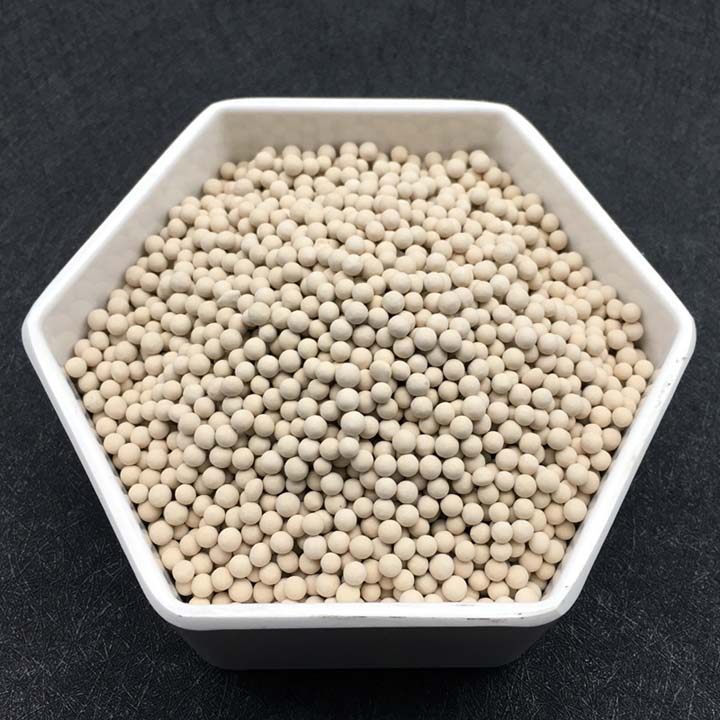Technical article
2022-03-22
4A molecular sieve is an alkali metal aluminosilicate, which can adsorb water, NH3, H2S, sulfur dioxide, carbon dioxide, C2H5OH, C2H6, C2H4 and other molecules whose critical diameter is not greater than 4A. It is widely used in the drying of gases and liquids, and can also be used in the refining and purification of certain gases or liquids. The selective adsorption performance of water is higher than that of any other molecules.
Today, We will introduce the softening water quality function of 4a molecular sieve.
Each oxygen atom in the 4A molecular sieve framework is shared by two adjacent tetrahedra, and this structure forms a large crystal hole that can be occupied by cations and water molecules, and these cations and water molecules have greater mobility , can carry out cation exchange and reversible dehydration. The ion exchange of 4A molecular sieve is carried out on the framework with aluminum ions, and each aluminum ion carries a negative charge, which can not only bind sodium ions, but also bind other cations. Calcium and magnesium ions can enter the large crystal cavity occupied by the original sodium ions, and replace the sodium ions in the 4A molecular sieve—that is, the sodium ions in the 4A molecular sieve can be ion-exchanged, and can be exchanged with Ca2+, Mg2+ ions in hard water exchange, so as to achieve the purpose of softening the water quality.
The speed of 4A molecular sieve binding calcium and magnesium ions is slower than that of sodium tripolyphosphate, and the binding ability with magnesium ions is weaker. However, 4A molecular sieve can easily and quickly remove a small amount of harmful heavy metal ions in aqueous solution, such as Pb2+, Cd2+, Hg2+, which is of great significance for purifying water quality.
